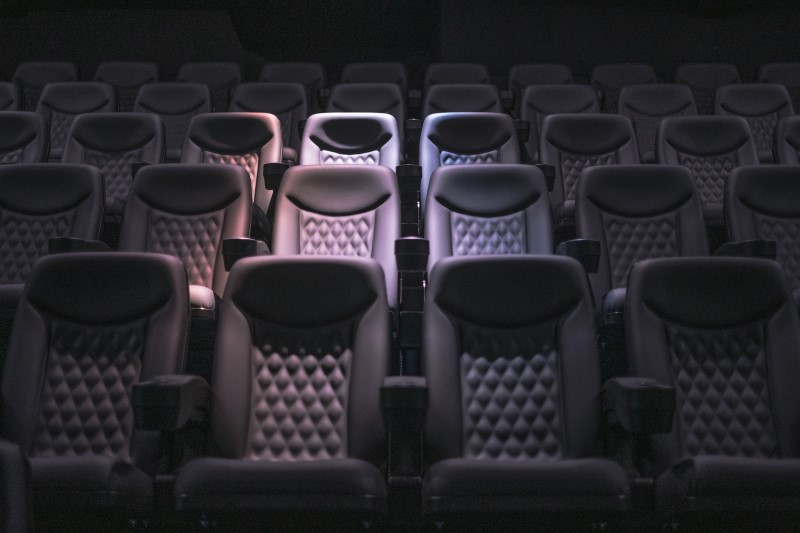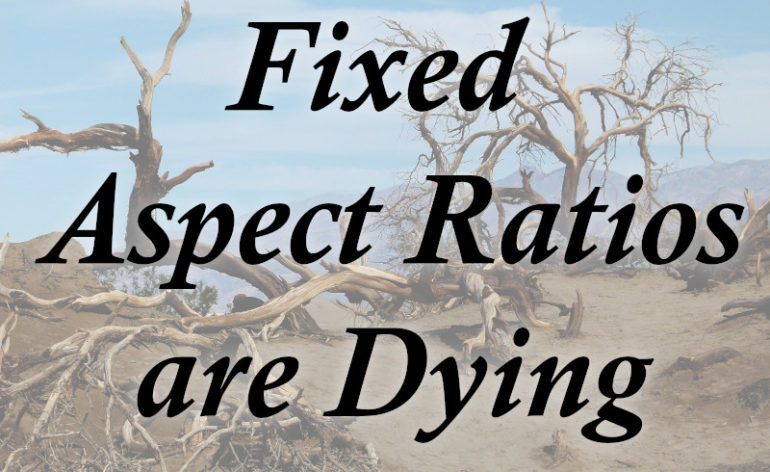Fixed Aspect Ratios Are Dying
Television and streaming are filmed in 16:9 aspect ratio and movies are in 2.35:1. This has been (mostly) true for years. Nearly every flat panel TV you can buy has the 16:9 aspect ratio. You can find projection screens that are in other aspect ratios, but 16:9 is the most common. This means that some older TV shows have black bars on the sides and movies often have black bars at the top and bottom. Filmmakers, traditionally, have had to decide what aspect ratio they want to use for their story. Or at least they did. Because all of that is soon going to end! Fixed aspect ratios are dying…and that’s a good thing!
Cropping and Pan and Scan
For as long as video content has been created, the shape of the screen upon which it would be viewed was of utmost importance. Content created for TV was filmed in 4:3 aspect ratio. Movies had a number of different aspect ratios that could be used (1.85:1 widescreen and anamorphic 2.39:1 widescreen most commonly). Theaters were eventually equipped with adjustable curtains that framed the screens. These curtains masked the screen to catch any overshoot. But when these movies were released for distribution on TV or video (VHS, Betamax, and Laserdisc back in the day)? They were cropped to 4:3.
I remember the first time I was introduced to widescreen movies. I was a youngster and whatever show I was watching was showing the difference between the widescreen version of a movie (VHS release of Bladerunner I believe) and the cropped version. It astounded me how much of the image I was missing. They also talked about how they cropped the image. Sometimes they would just zoom in and cut off the sides. Other times, especially if there were important things happening on the edges of the screen, they would “pan and scan.”
I was honestly appalled. I vowed never to buy a 4:3 movie again.
That promise ended up being hard to keep as it was still a number of years before widescreen versions of releases were widely available and DVD was still a long way off.

Widescreen TVs Changed Everything
I remember the first time I saw a widescreen television. I was walking through a mall and could see it clearly on display. Out of all the people I was with, I was the only one that knew (or cared) about widescreen aspect ratio and even I thought there wasn’t enough content to justify the exorbitant cost.
As you well know, widescreen (or 16:9 aspect ratio) quickly became the norm. Now, you can’t buy a 4:3 television outside of a flea market or pawn shop. All TV is now shot in 16:9. Movies still feature a myriad of different fixed aspect ratios, but that is quickly dying out. Why? Progress.

Different Aspect Ratios, Different Feelings
For a long time, filmmakers chose their aspect ratio based on the type of film they were creating. If they were creating a character-driven film, their aspect ratio would be taller allowing for more of the character’s bodies to be seen. If it was an epic, or a movie with sweeping vistas, they’d choose an aspect ratio that was wider.
IMAX movies are shot in 16:9 aspect ratio (technically 1.90:1 but close enough) because that is the shape of the IMAX screen. But many filmmakers have started (notably Christopher Nolan with the Dark Knight movie) adding IMAX scenes in the middle of their otherwise 2.35:1 aspect ratio movies. Why? Because for those shots it made sense.
Recently, Disney has released movies on their Disney+ streaming service they are calling IMAX Enhanced. Suddenly, we now have access to IMAX scenes in movies that we didn’t know existed! These scenes were shot in taller aspect ratios but cropped for theatrical, disc, and streaming releases. We get to see more of the screen on these versions than even the (objectively superior) disc versions.
Editor’s Note: IMAX Enhanced on Disney+ currently is different than the IMAX Enhanced that can be found on some discs. The Disney+ version only encompasses the video and not any of the problematic audio aspects of IMAX Enhanced. While we expect that Disney will incorporate these audio features in the future, they are not currently part of the Disney+ streaming movies.
How Are Fixed Aspect Ratios Dying?
Some directors aren’t thrilled about Disney’s decision. Most notably, Scott Derrickson, director of Doctor Strange, tweeted that he “never intended that aspect ratio to be used for home viewing.” I don’t doubt it. But, now that directors know that switching aspect ratios is possible, why wouldn’t they take advantage of it?
Let’s pretend you are a director. You’ve always used fixed aspect ratios because you’ve had no other choice. Disney starts allowing movies to switch the aspect ratio rather than having to stick to just one. Now, you can film your character-driven scenes in 16:9 and your action scenes in 2.35:1. It’s the best of all worlds!
What About Movie Theaters?
That’s the question now, isn’t it! Movie theaters aren’t going to adjust their curtains mid-movie to accommodate different aspect ratios. So, either they are going to have to live with occasional black bars (just like we do at home) or there will have to be a theatrical release that picks one aspect ratio for the entire movie. Would this make home releases more desirable to watch? I’d say so. But I was the kid that would go to multiple stores looking for the widescreen VHS releases of movies.

Who Does The Benefit?
Fixed aspect ratios dying benefits nearly everyone. Filmmakers will have more tools to use in order to tell their stories. Viewers will have more of their screens utilized more of the time. The only people that really “suffer” are movie theaters and those people that decided to buy 2.35:1 aspect ratio screens. Videophiles, for a long time, advocated getting these aspect ratio screens so that they wouldn’t see black bars in movies. If movies move more toward variable aspect ratios, these screens will be more of a detriment.
Our Take
If we had to be honest, we are surprised it took this long for someone to say, “Hey, why do I have to use only one aspect ratio?” Nolan has been doing it. We’ve seen it in other movies. It is time to empower all filmmakers to utilize switching aspect ratios to tell better stories. Are fixed aspect ratios dying? We hope so!



I can’t stand multiple aspect ratios, the switching in between scenes is very noticeable and distracting. It doesn’t serve it’s intended purposes, just give me the biggest widescreen (it feels more enveloping) and be done with it.
Fair enough. But many movies are still shot in 2.35:1 (or similar) and directors are currently unwilling to agree on a single aspect ratio for all movies much less screens. So, either all screens will have to be converted to whatever Nolan (or whoever) is currently doing, or they are going to have to film everything in 16:9 (since that is the vast majority of TVs). I don’t see them doing that. If a movie is in 2.35:1 and has an IMAX scene, switch away. Give me as much of the picture as possible.
lol this article spins switching aspect ratio as a feature not a flaw, i’m sure it’s nothing to do with promoting iMax and using the iMax branding it’s more because Nolan just saw he needed to film them scenes in imax ratio mmm k